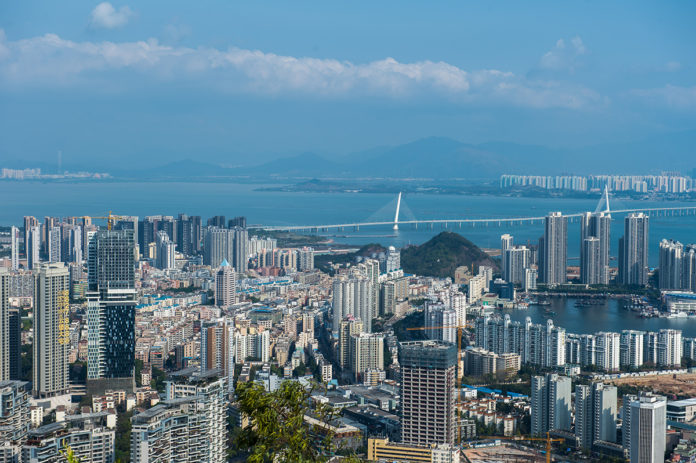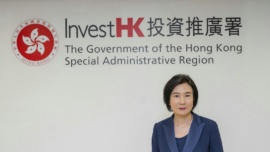What this chronology demonstrates is that the authorities in Beijing may only have agreed to the GBA project in 2017. Since then, however, it has been going full blast.
MB October Special Report | GBA: Greater Expectations
2003 – The central government proposes the so-called co-operation of the Pan-Pearl River Delta region, with a development plan outline published in 2008 covering the period up to 2020.
2008 – The concept of the GBA first surfaces in a Guangdong provincial document, suggesting Macau, Hong Kong and Guangdong build a quality living area in the Pearl River Delta Region with sustainable economic and social development.
October 2009 – The development of the GBA is identified as a key focus for establishing cross-border regional co-ordination in the Planning Study on the Co-ordinated Development of the Greater Pearl River Delta Township, completed by the governments of Guangdong Province, Hong Kong and Macau
April 2010 A ‘Study on the Action Plan for the Bay Area of the Pearl River Estuary’ commences
March 2016 – The idea of a city cluster in Southern China is floated in the country’s 13th Five-Year Plan (2016-2020) as well as this year’s working annual report of the central government.
March 2017 Premier Li Keqiang announces plans to develop the GBA in his annual government report at the Fifth Session of the 12th National People’s Congress of the People’s Republic of China
July 2017 – Framework Agreement on Deepening Guangdong-Hong Kong-Macau Co-operation in the development of the Bay Area is witnessed by Xi Jinping
October 2017– President Xi Jinping emphasises the prioritisation of the development of the GBA at the 19th National Congress of the Communist Party of China
March 2018 – Premier Li Keqiang announces an implementation plan for the GBA will soon be issued
March 2019 – The Central Government promulgates eight policy measures for taking forward the development of the GBA to facilitate Hong Kong residents to develop, work and reside in the Mainland cities of the Greater Bay Area, as well as strengthening the convenient flow of people and goods

What the Plan says
“By 2022, the combined strength of the Greater Bay Area should increase substantially, the co-operation among Guangdong, Hong Kong and Macau should be deepened and broadened, the internal driving forces for development should be further enhanced in the region, and the framework for an international first-class bay area and world-class city cluster that is vibrant and highly innovative with an optimised industrial structure, a smooth flow of various factors and a pleasant ecological environment should essentially be formed.”
Prehistory
In the period spanning the 70’s and 90’s, co-operation between Guangdong, Hong Kong and Macau of version 1.0 began, based upon the discrepancy in the level of economic development between the three territories and the high degree of dependence the upon economic development of the Pearl River Delta in relation to Hong Kong and Macau.
As the new century dawned the interregional integration of Guangdong-Hong Kong-Macau entered a new phase. Indeed, version 2.0 of co-operation between Guangdong, Hong Kong and Macau, where the service sector predominated, emerged following the joint Guangdong-Hong Kong meeting in 1998, the establishment of the Closer Economic and Trade Relations Agreement (CEPA) in 2003, the signing of the Guangdong-Hong Kong Framework Co-operation Agreements in 2010, and the implementation of the Guangdong Free Trade Pilot Zone in 2015.
In April 2015, the Guangdong Free Trade Pilot Zone comprising Shenzhen Qianhai, Zhuhai Hengqin and Guangzhou Nansha was established. The creation of this Pilot Zone marks the beginning of phase 3.0 of Guangdong-Hong Kong-Macau co-operation, in which the harmonisation of economic, trade and legal institutes and the integration of technical standards are highlighted.
Compared to version 1.0 of Guangdong-Hong Kong-Macau co-operation in which the manufacturing sector is highlighted and version 2.0 which highlights the services sector, version 3.0 of co-operation, based upon the Guangdong Free Trade Pilot Zone, underlines the intention to make considerable progress and to innovate at the level of ‘institutional co-operation’, a mode of co-operation that is imperative.
(Excerpts from research paper Transição da Integração Inter-regional na Construção da Região Metropolitana da Grande Baía Guangdong-Hong Kong-Macau (2018) by Zhang Jingen, Full Professor at Dr. Sun Yat-Sen University School of Public Management)
























